
With free agency approaching, MLBTR has taken a position-by-position look at the options who’ll be available on the open market. We’ll wrap up the exercise with a look at the group of right-handed relievers.
Top of the Market
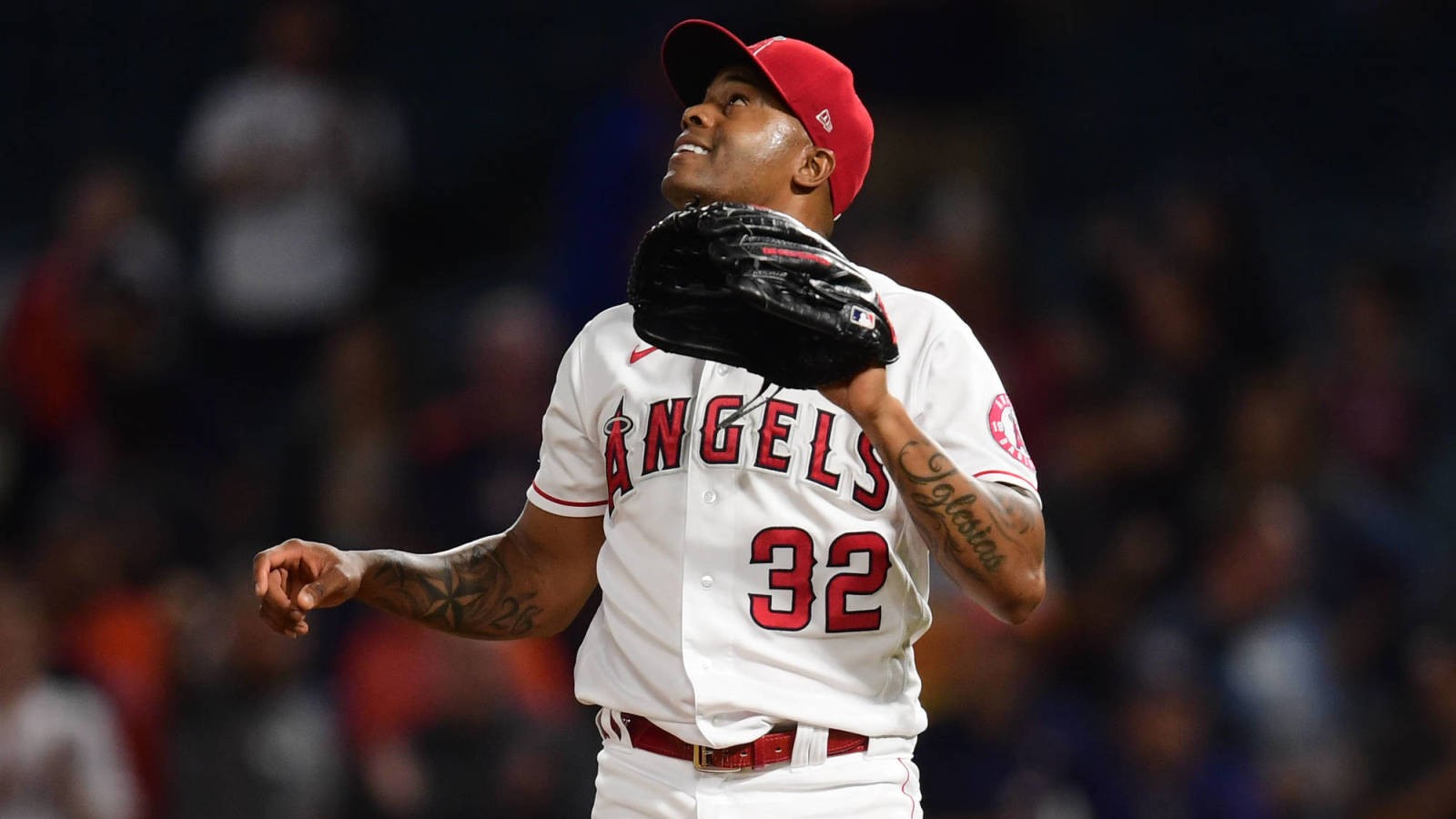
Raisel Iglesias (32): After being dealt to the Angels in what was largely a salary-dump move for the Reds, Iglesias quietly had the best season of his career in many respects. He racked up 34 saves, which matched his personal best. Over 70 innings, his ERA was 2.57. His strikeout rate was an excellent 37.7%, which was bested only by Jacob deGrom, Liam Hendriks and Paul Sewald, among pitchers with at least 60 innings. Iglesias dropped his walk rate to a personal best 4.4%, also an elite number. In short, he was one of the best relievers in the game this year. If we prorate 2020 out to a full season, Iglesias has now logged 60-plus innings with an ERA under 2.75 in five of the last six seasons, with 2019’s 4.16 ERA looking like an aberration.
Ready-Made Closers
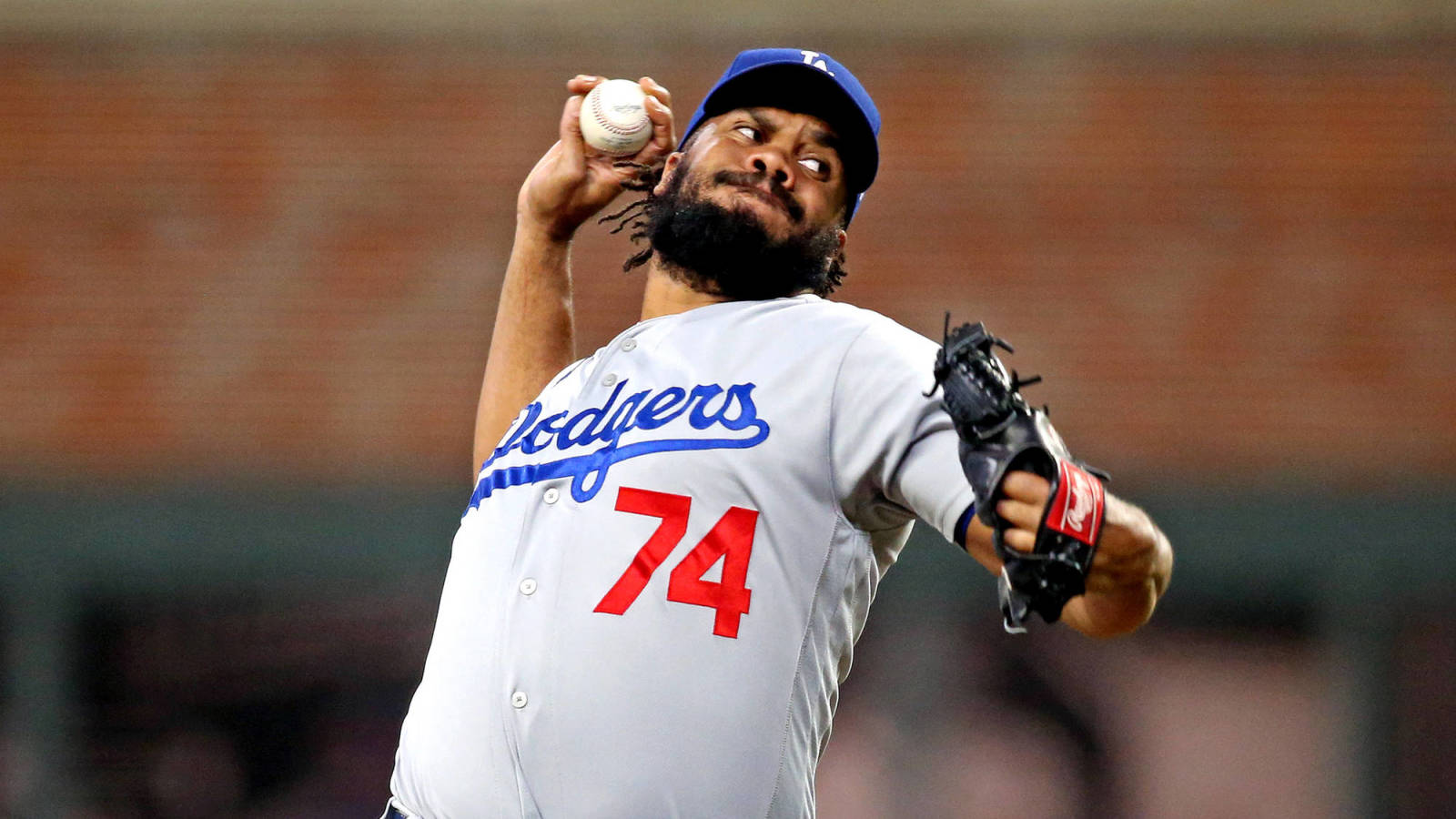
Kenley Jansen (34): The last time Jansen was a free agent, he re-signed with the Dodgers on a five-year, $80 million contract. In the first year of that deal, 2017, he was as dominant as Dodgers fans had come to expect, racking up 41 saves with a miniscule 1.32 ERA, with elite strikeout and walk rates of 42.2% and 2.7%, respectively. Over 2018-2020, he slipped a bit from those incredible heights but was still very good. The ERA went above 3.00, the strikeout rate hovered around 30% and the walk rate has gradually climbed toward double digits. In 2021, he got the ERA back down to 2.22 despite his walk rate climbing to a higher than average 12.9%. He still notched 38 saves and had a great year overall, but there are concerns about the underlying numbers. That combined with his age will certainly mean he won’t match his last contract, but he should still command a lot of interest on a shorter term.
Alex Colome (33): 2021 was Colome’s sixth straight season of tallying at least 12 saves. He had 17 this year over 65 innings. However, his 4.15 ERA was the highest of his career. He’s gradually become more of a ground-ball pitcher over the years, sacrificing strikeouts in the process. His 53.7% grounder rate was the highest of his career, although his strikeout rate has been around 20% in 2020 and 2021, after peaking at 31.6% in 2016.
Ian Kennedy (37): It’s been an up-and-down ride for Kennedy since he moved to the bullpen three years ago. The first campaign was great, as he saved 30 games for the Royals in 2019 with an ERA of 3.41 and a 27.4% strikeout rate. Unfortunately, injuries hampered his 2020, limiting him to 14 innings with an ERA of 9.00. The Rangers then signed him on a minor-league deal that turned into a steal. Kennedy notched 16 saves in 31 1/3 innings with Texas, with a 2.51 ERA. The Rangers were then able to send him to Philadelphia along with Kyle Gibson for a package of prospects. Things didn’t go as smoothly for Kennedy with the Phillies, however, as his ERA ballooned up to 4.13 over 24 innings. He did still notch 10 more saves, however, giving him a total of 26 on the year. Considering his age and inconsistent track record, he won’t get a lengthy contract. But that could make him attractive to both contending clubs as well as rebuilding clubs that would hope for a solid first half and a deadline deal like the Rangers just got.
Other High-Leverage Options
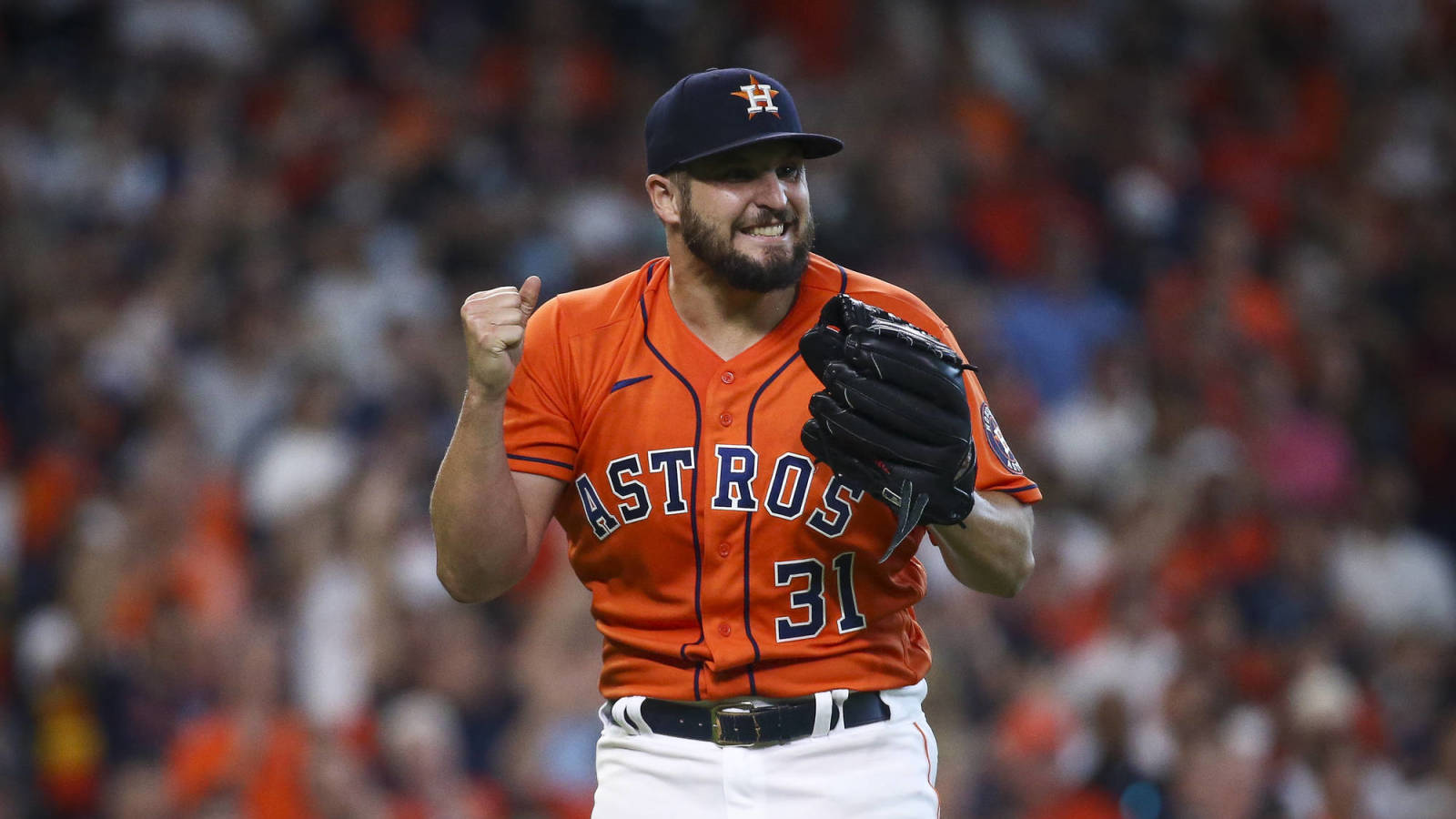
Kendall Graveman (31): Graveman’s first full season as a reliever could hardly have gone much better. Between Seattle and Houston, he threw 56 innings with an ERA of 1.77, strikeout rate of 27.5% and walk rate of 9%. He logged 10 saves in Seattle before the trade and is now pitching for the Astros in the postseason.
Corey Knebel (30): As a Brewer, Knebel was dominant in 2017 and 2018 but then missed all of 2019 due to Tommy John surgery, and then struggled in limited action in 2020. After being traded to the Dodgers for 2021, Knebel seemed to get things back on a good track. Despite missing a decent chunk of the season with a lat strain, he still logged 25 2/3 innings with an ERA of 2.45, 29.7% strikeout rate and 8.9% walk rate. He also pitched 5 2/3 innings for the Dodgers in the postseason, racking up 11 strikeouts and allowing a pair of earned runs. He’s excellent when on the mound, but interest will likely be tempered by question marks surrounding his health.
Ryan Tepera (34): Tepera had the best season of his career in 2021, split between both Chicago clubs. Overall, he threw 61 1/3 innings with an ERA of 2.79, a personal best. His 30.8% strikeout rate was better than every previous season of his, except for the shortened 2020 campaign. His 7.9% walk rate was the lowest since his rookie year in 2015. Tepera’s deal with the Cubs last winter came with a guarantee of only $800,000, a figure he’ll handily top this time around.
Hector Neris (33): Neris racked up 28 saves in 2019 with an ERA of 2.93. Since then, however, inconsistency has bumped him out of the closer’s seat. Over 2020 and 2021, he’s thrown 96 innings with a 3.84 ERA and 17 saves. His strikeout rate over those two campaigns is an excellent 30.3%, but his walk rate is higher than average at 10.9%. He likely won’t be any team’s first choice for the closer job but could be an appealing fallback option.
Daniel Hudson (35): Hudson’s season started out great, as he threw 32 2/3 innings for Washington, with an ERA of 2.20, buoyed by a strikeout rate of 37.8% and walk rate of 5.5%, both of which are excellent. But after he was dealt to the Padres at the deadline, things mostly went in the wrong direction. In 19 innings for San Diego, his ERA shot up to 5.21 and his walk rate up to 10.8%. His strikeout rate, while still excellent, dropped to 32.5%.
Collin McHugh (35): McHugh was on and off the IL all season but still threw 65 excellent innings in 37 games for the Rays. He struck out 30% of the batters he faced and walked only 4.9%. His 1.55 ERA was fourth-best in MLB among pitchers with at least 60 innings, behind only deGrom, Emmanuel Clase and Ranger Suarez. McHugh missed all of 2020 due to injuries and then signed a one-year, $1.8 million deal with the Rays. After a year of health and effectiveness, he seems on course to top that this winter.
Solid Veterans
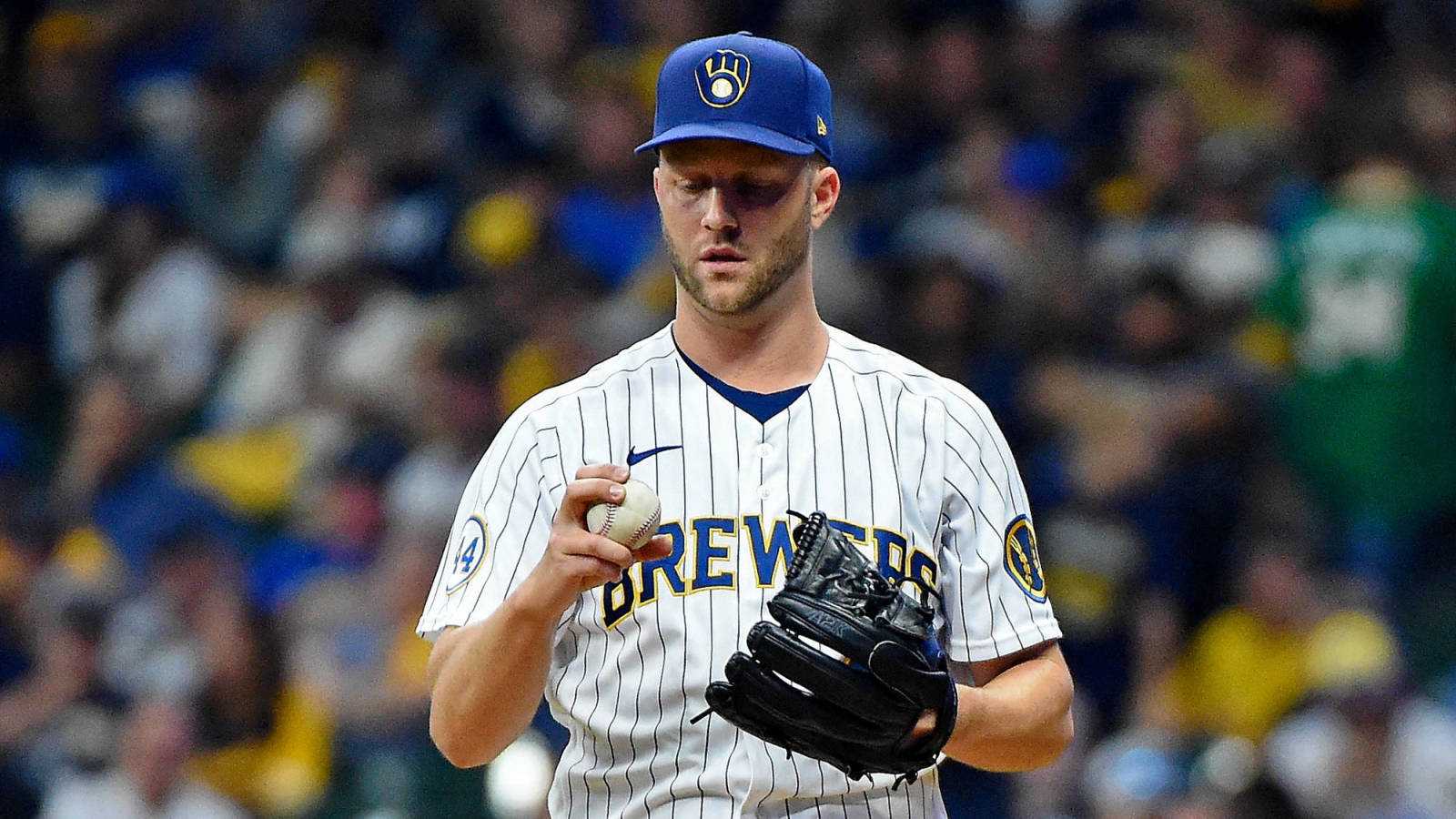
Brad Boxberger (34): Boxberger had to settle for a minor-league deal last winter, which turned out to be a great pickup for the Brewers. They got 64 2/3 innings out of him in the regular season, with an ERA of 3.34, 31.2% strikeout rate and 9.4% walk rate. He also tossed a couple of scoreless innings for them in the NLDS.
Archie Bradley (29): Bradley seemingly turned himself into a different kind of pitcher this year, getting way fewer strikeouts but way more grounders. In the end, it seemed to work well enough. In 51 innings for Philadelphia, his ERA was 3.71. His 17.9% strikeout rate was a big drop-off, as he was between 22% and 28% in the previous five campaigns. However, his ground-ball rate was 55.7%, his best since his cup of coffee in 2015.
Jesse Chavez (38): Chavez didn’t sign until late April this year, and even then, it was a minor-league deal. He didn’t get selected to the big-league club until June. But it turned into a bargain for Atlanta, which got 33 2/3 innings out of Chavez with an ERA of 2.14. His 8.3% walk rate is around league average, but his quality 27.1% strikeout rate was the highest of his career. He’s also added 1 2/3 scoreless innings in the playoffs so far.
Steve Cishek (36): 2020 was a bad year for Cishek, but he bounced back in 2021 and made 2020 look like a fluke. Leaving aside 2020, Cishek has 10 consecutive seasons of throwing at least 44 innings with an ERA below 3.60. In 2021, he logged 68 1/3 innings for the Angels with an ERA of 3.42.
Tyler Clippard (37): Clippard gave the Diamondbacks 25 1/3 innings in 2021 with an ERA of 3.20, but there are reasons for concern underlying that. His strikeout rate of 18.9% was his lowest mark since way back in 2008, and his 9.9% walk rate was high highest since 2017. Perhaps that’s somewhat attributable to the shoulder injury that caused him to miss the first half of the season.
Jeurys Familia (32): The Mets signed Familia to a three-year, $30 million deal before the 2019 season. Over the course of that deal, he logged 146 innings with an ERA of 4.62, strikeout rate of 24.1% and walk rate of 13.4%. His 2021 season was a bit better than the first couple years of the deal, as his ERA was 3.94 and his strikeout rate shot up to 27.5% and his walk rate dropped to 10.3%.
Luis Garcia (35): Garcia signed a minor-league deal with the Yankees this past offseason, but was released in July and caught on with the Cardinals. Over the final few months, Garcia had one of his best stretches in years. In 33 1/3 innings, he had an ERA of 3.24, his lowest since 2017. His strikeout rate was above average at 25.2%, and his walk rate was an excellent 5.9%.
Yimi Garcia (31): Garcia got some time as closer for the Marlins in the first half of the season, racking up 15 saves with an ERA of 3.47. Since a deadline deal to the Astros, he’s been a setup guy, logging 21 1/3 innings with an ERA of 5.48. However, his strikeout and walk rates both improved after the deal, suggesting there’s bad luck contributing to that high ERA.
Mychal Givens (32): It was a tale of two seasons for Givens. His first half with the Rockies was excellent, as he pitched 29 2/3 innings with an ERA of 2.73, strikeout rate of 27.4% and walk rate of 11.3%. After a deadline deal to the Reds, he logged 21 1/3 innings with an ERA of 4.22, strikeout rate of 21.7% and walk rate of 14.1%.
Chris Martin (36): It’s been a strange season for Martin as his strikeout rate plummeted, but he has managed to stay effective. Over 2019 and 2020, he threw 73 2/3 innings with an ERA of 2.81, strikeout rate of 30.1% and walk rate of 2.8%. In 43 1/3 innings in 2021, his strikeout rate dropped all the way to 18.2%, although his walk rate stayed low at 3.3% and his ERA went up to 3.95.
Adam Ottavino (36): Ottavino’s best season was 2018 with the Rockies. In 77 2/3 innings, he had an ERA of 2.43, strikeout rate of 36.2% and walk rate of 11.17%. Since then, he’s still been a solid contributor but things have generally trended in the wrong direction. In 2021, he pitched 62 innings, with an ERA of 4.21, strikeout rate of 25.7% and walk rate of 12.7%.
Yusmeiro Petit (37): Petit logged 78 innings in 2021 with an ERA of 3.92. However, his strikeout rate dropped to 11.8%, the lowest of his career except for a cup of coffee in 2012. But his walk rate stayed exceptionally low at 3.8%. He doesn’t allow a lot of hard contact and has consistently seen his real results outperform the advanced metrics.
Hansel Robles (31): It’s been a mercurial few seasons for Robles. 2019 was excellent, as he notched 23 saves for the Angels, throwing 72 2/3 innings with an ERA of 2.48. In 2020, his ERA blasted up to 10.26, leading to his non-tender by the Halos. He was picked up by the Twins and threw 44 innings with an ERA of 4.91 and strikeout rate of 22.9%, recording 10 saves and getting traded to the Red Sox. For Boston, he threw another 25 innings with an ERA of 3.60 and a much-improved strikeout rate of 30.3%.
Sergio Romo (39): Things mostly trended in the wrong direction for Romo in 2021. Over 61 2/3 innings for the Athletics, he recorded an ERA of 4.67, the highest of his career. His 23.2% strikeout rate was tied for the worst of his career, matching his rate from 2013. And his 8.1% walk rate was his highest since 2017. Signed to a one-year, $2.25 million contract last winter, he’ll probably be looking at a lower salary in 2022.
Joe Smith (38): The 2021 season was going terribly for Smith, as he pitched 21 2/3 innings for Houston with an ERA of 7.48. However, after getting traded to Seattle, he evened things out with 18 innings with an ERA of just 2.00. On the whole, his 4.99 ERA for the year was the worst of his career. His 19.7% strikeout rate on the year was subpar, but his 4.6% walk rate was quite good.
Joakim Soria (38): Soria was one of few bright spots for the Diamondbacks this season. He pitched 29 1/3 innings out of their bullpen with an ERA of 4.30 and was then flipped to the Blue Jays for a couple of prospects. Due to various injuries, he logged only eight innings for the Jays down the stretch. Overall, he notched 37 1/3 innings with an ERA of 5.06, strikeout rate of 25.2% and walk rate of 7.5%.
Wild cards
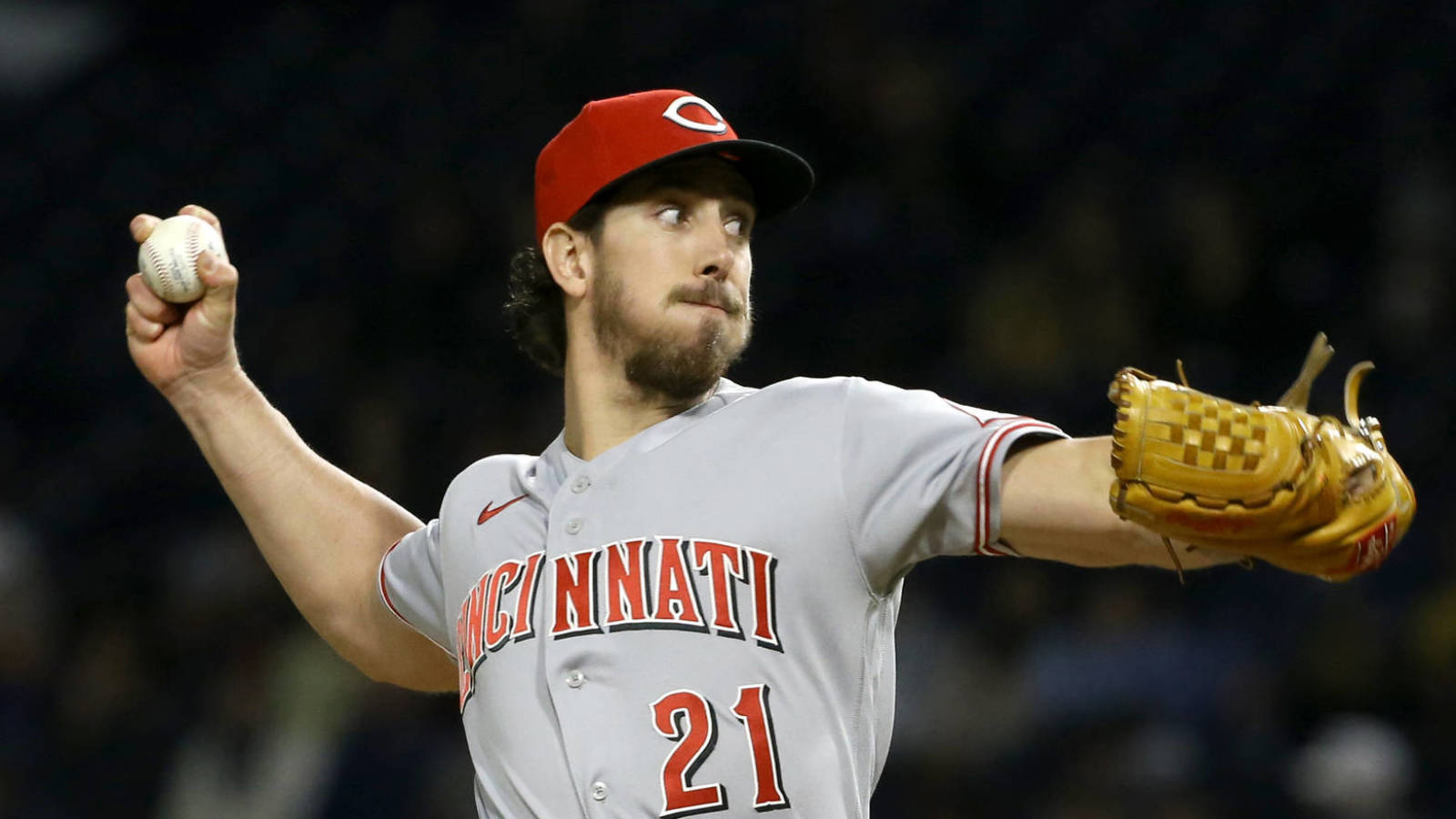
Michael Lorenzen (30): Lorenzen is one of the most unique players in baseball, having the ability to hit, play the outfield, pitch as a starter or reliever. His best work has been out of the bullpen, but he’s apparently looking for a rotation job this winter. He made 21 starts in 2014 but only five since, making him fairly unproven in that regard. However, his numbers as a reliever have been solid at times. From 2016 to 2019, he logged 297 1/3 total innings with an ERA of 3.39. Injuries have limited him over the past few years, however. In 2021, his ERA was 5.59 over a 29-inning sample. If he doesn’t find the rotation job he seeks, he could make for a solid bullpen addition somewhere, as long as his health cooperates.
Jimmy Nelson (33): Nelson had a dominant season as a starter in 2017, but injuries wiped out his 2018, most of his 2019 and all of his 2020 season. 2021 looked to be a bounce back, as he pitched 29 innings out of the Dodgers’ bullpen with an ERA of 1.86, strikeout rate of 37.9% and walk rate of 11.2%. Unfortunately, it was announced in early August that he would require Tommy John surgery, which will wipe out most or all of his 2022. Teams have occasionally given multi-year contracts to players rehabbing from Tommy John, with Ken Giles’ deal with the Mariners being one recent example.
Trevor Rosenthal (32): The Athletics signed Rosenthal to a one-year, $11 million deal in the offseason but never got any production in return. He underwent thoracic outlet surgery in April and went on the IL. In July, while trying to work his way back onto the mound, he tore a labrum in his hip and had to undergo another surgery, this one ending his season. With a lost season and two surgeries, Rosenthal will have to prove his health before getting interest in free agency. But considering his past run of success from 2012 to 2017 and his bounce-back campaign in 2020, he will surely garner his share of interest if he can get himself mended.
Kirby Yates (35): Yates was apparently close to signing with Atlanta for one-year, $9 million before the Braves noticed an elbow issue and pulled the deal off the table. The Blue Jays, knowing about the elbow issue, decided to take a chance and signed him to an incentive-laden deal with a $5.5 million guarantee. The gamble didn’t pay off as Yates underwent Tommy John surgery at the end of March and never got into a game in 2021. Yates was flat out incredible in 2019, racking up 41 saves over 60 2/3 innings with an ERA of 1.19, strikeout rate of 41.6% and walk rate of 5.3%. However, injuries limited him to just four 1/3 innings in 2020 and then wiped out his 2021. If he successfully rehabs, he could be the biggest buy-low wildcard candidate of them all.
Depth Options
Matt Andriese (32): Since moving to the bullpen full-time, Andriese has tantalized with decent strikeout and walk rates, but hasn’t had the results to match. Over the past four seasons, he’s tallied 229 2/3 innings with a 24% strikeout rate and 7.6% walk rate, both of which are slightly better than league average. However, his ERA in that time is 4.98. Advanced metrics think he should be better, but that seems to always be the case. His BABIP this season was .392, helping his ERA balloon up to 5.21. If some team can figure out a way get better results, he could be a buy-low success story. Last winter, he was signed by the Red Sox for a $2.1 million guarantee, was designated for assignment in August, signed with the Mariners and was designated again.
Shawn Armstrong (31): Armstrong logged 36 innings in 2021 between the Orioles and Rays, putting up an ERA of 6.75, but near-average strikeout and walk rates of 26.7% and 9.1%, respectively.
Cam Bedrosian (30): After five straight solid seasons in the Angels’ bullpen, Bedrosian took a step backward in 2021. From 2016-2020, he threw 225 innings with an ERA of 3.20, 25.1% strikeout rate and 9.1% walk rate. In 2021, split between Cincinnati, Oakland and Philadelphia, he logged 25 innings with an ERA of 5.04, 19.8% strikeout rate and 14.7% walk rate.
Scott Blewett (25): Blewett worked five innings of one-run ball this year, but he did so with five walks and four strikeouts. The 25-year-old spent most of the season at Triple-A, struggling to keep the ball in the yard en route to a 6.39 ERA.
Brad Brach (36): Brach logged 30 innings of the Reds ’pen, but without much to show for it. His ERA was 6.30 and his walk rate was 12.9%, though his strikeout rate was still around league average at 23.7%.
Jhoulys Chacin (34): Chacin spent almost the entire season in multi-inning relief with the Rockies. His 4.34 ERA is decent for a pitcher whose home games are in Coors Field, but that came with less impressive strikeout and walk numbers.
Tyler Chatwood (32): It was a season to forget for Chatwood, as his one-year deal with the Blue Jays kept him on the roster only until the end of July. He was designated for assignment, signed with the Giants and then designated for assignment again at the end of August. Overall, he threw 32 innings on the year with an ERA of 5.63 and a bloated walk rate of 14.5%, though he still had a robust strikeout rate of 26.2%.
Kyle Crick (29): Crick had a couple nice seasons early in his career, but he’s struggled of late. He walked a massive 17.8% of opponents this year with the Pirates and was let go. Crick showed much better in a brief stint with the White Sox’s Triple-A affiliate but didn’t get a big league look in Chicago.
Wade Davis (36): The 2021 campaign was a third consecutive frustrating season for Davis. He threw 42 2/3 innings for the Royals this year, with an ERA of 6.75, along with mediocre strikeout and walk rates of 20% and 10%, respectively.
Chris Devenski (31): Devenski underwent Tommy John surgery in June of 2021, making him unlikely to contribute much in 2022. He also missed most of 2020 because of elbow issues, meaning he’s tallied only 11 innings over the past two years combined. He had two excellent campaigns for the Astros in 2016 and 2017, but saw his numbers slide a bit for 2018 and 2019. He’ll likely have health questions hovering over him until he can convince teams otherwise.
Rafael Dolis (34): Dolis had a great four-year stretch in Japan and parlayed that into a two-year deal with the Blue Jays. The first year, 2020, went quite well, as Dolis had an ERA of 1.50 over 24 innings in the shortened campaign, along with a 31% strikeout rate. However, 2021 wasn’t nearly as pleasant, as his ERA shot up to 5.63 over 32 innings. His 14% walk rate in 2020, which was already high, shot up to 17.3% in 2021, although the strikeout rate was still good at 25%. Dolis cleared waivers and finished the season well in Triple-A, throwing 11 1/3 innings with an ERA of 1.59, 26.4% strikeout rate and a still-high walk rate of 13.2%.
Jake Faria (28): Faria soaked up 32 2/3 innings of long relief for the D-backs but posted only a 5.51 ERA before being outrighted off the roster.
Luke Farrell (30): Farrell tossed 24 2/3 frames for the Twins, posting a 4.74 ERA with slightly worse than average strikeout, walk and ground-ball numbers.
Michael Feliz (29): Feliz earned his frequent flier points in 2021, spending time with Pittsburgh, Cincinnati, Boston and Oakland. In total, he threw 20 innings with an ERA of 7.20. However, his 24.4% strikeout rate was still around average, and he reduced his walk rate to 7.8%, after being in double digits for the previous four seasons.
Shane Greene (33): The typically productive Greene is coming off a rough showing in 2021. He got off to a late start after lingering in free agency until May, then struggled between both the Braves and Dodgers. Over 23 2/3 frames, he managed just a 7.23 ERA with a career-high 12.4% walk rate.
Jesse Hahn (32): It was mostly a lost season for Hahn, as he threw just 3 1/2 innings before going on the IL with shoulder issues and never returned. Due to various injuries, he’s thrown just 25 1/3 big-league innings over the past four years.
David Hale (34): Hale posted a 6.41 ERA in 26 2/3 innings with the Phillies. He was cut loose in June and didn’t catch on with another club for the rest of the season.
Heath Hembree (33): Hembree’s massive 34.2% strikeout rate will surely attract interest from clubs, but the fly-ball pitcher had significant issues keeping the ball in the yard with the Reds this past season. Hembree’s results were far better after a late-season waiver claim by the Mets.
David Hess (28): Hess was tagged for a 9.90 ERA in 20 innings, splitting the 2021 season between the Rays and Marlins.
Greg Holland (36): Holland had a nice bounce-back campaign in 2020 but couldn’t repeat the feat in 2021. His 1.91 ERA from last year shot up to 4.85 this year. His strikeout and walk rates also both went from better than average to worse than average.
Tommy Hunter (35): Hunter signed a minor-league deal with the Mets last winter and logged eight innings without allowing an earned run before heading to the injured list May 21st with a lower back issue. He went to the Rays as part of the Rich Hill deal but didn’t pitch again on the year.
Brandon Kintzler (37): The ground-ball specialist had a terrible year with the Phillies, throwing 29 2/3 innings with an ERA of 6.37. However, his BABIP was .369, well above his previous seasons, meaning there could be some bad luck in there. Regardless, he was released by the Phillies in early August and didn’t latch on anywhere else over the final two months of the season.
Josh Lindblom (34): Lindblom had a great run in the KBO but struggled over his two seasons in Milwaukee.
Keynan Middleton (28): Middleton threw 31 innings for the Mariners this year with an ERA of 4.94, strikeout rate of 17.1% and walk rate of 13.6%. He finishes the year with between four and five years’ service time, meaning he could come with an extra year of control for any team that signs him for 2022.
Darren O’Day (39): Due to various injuries, O’Day pitched only 10 2/3 innings this year. He’s still fairly effective when healthy but hasn’t pitched more than 20 innings since 2017.
Blake Parker (37): Signed by the Guardians to a minor-league deal last winter, Parker ended up being a solid contributor for their bullpen, logging 43 2/3 innings with an ERA of 3.09. However, his strikeout rate dropped to 20%, his lowest mark since 2016 and well below his 36.2% rate from last year.
David Phelps (35): Phelps got off to an excellent start this season, throwing 10 1/3 innings out of the Blue Jays’ pen. He had an ERA of 0.87, strikeout rate of 35.7% and walk rate of 9.5%. Unfortunately, he went on the IL in mid-May with a lat strain that required season-ending surgery. His recovery from that procedure will determine how much interest he gets. If he’s healthy, he could be an interesting buy-low target.
Adam Plutko (30): It was an awful campaign for Plutko in 2021, as he threw 56 1/3 innings for the Orioles with an ERA of 6.71. His strikeout rate of 17.3% and walk rate of 10.6% were both worse than league average. He was designated for assignment in August and cleared waivers.
Daniel Ponce de Leon (30): Ponce de Leon had some nice seasons as a swingman early in his career, but 2021 was a struggle. He worked 33 1/3 innings of 6.21 ERA for the Cardinals before being released in September.
Erasmo Ramirez (32): Ramirez logged 26 2/3 innings for the Tigers this year, with a 5.74 ERA and subpar 18.3% strikeout rate. However, his 4.6% walk rate was very good. He was placed on release waivers by the club in August.
Sal Romano (28): Romano bounced around the league via waivers and minor-league free agency all season. Between three clubs, he tossed 25 innings of 6.12 ERA ball.
Ervin Santana (39): Santana worked 65 1/3 innings over just 38 appearances, pitching primarily as a long man for the Royals. The longtime big-league starter posted a 4.68 ERA.
Bryan Shaw (34): Shaw struggled mightily with the Rockies and Mariners from 2018-20, but he recaptured some of his old bullpen workhorse form after returning to Cleveland this year. The veteran worked 77 1/3 innings of 3.49 ERA ball. His peripherals didn’t support that caliber of run prevention, but Shaw soaked up plenty of medium-leverage innings.
Burch Smith (32): Smith pitched 43 1/3 innings out of Oakland’s bullpen, but with an ERA of 5.40. His strikeout rate, which was above 23% going into the year, plummeted to 14.9%. His walk rate was a very good 5.9%, however. He was designated for assignment and outrighted in September.
Hunter Strickland (33): Strickland had his best season in years in 2021. Between the Rays, Angels and Brewers, he threw 58 2/3 innings with an ERA of 2.61, 24% strikeout rate and 9.1% walk rate. He’s had to settle for minor-league deals in recent offseasons but could do better this winter after a strong campaign.
Cesar Valdez (37): Valdez surprisingly became the Orioles closer for a time this season, with his low-velocity style not matching the typical profile for that job. However, it didn’t last, as he was bumped from that role and later designated for assignment, re-selected to the Orioles and then later designated a second time. Overall, he logged 46 big league innings with an ERA of 5.87.
Dan Winkler (32): Winkler pitched 39 2/3 innings for the Cubs in 2021 with an ERA of 5.22. His strikeout and walk rates both were the worst of his career. He was released by the club in August.
Brandon Workman (33): Workman signed a one-year deal with the Cubs last winter but pitched only eight innings for them with an ERA of 6.75. He latched on with the Red Sox and pitched 20 innings with an ERA of 4.95 before being designated for assignment after the trade deadline and electing free agency.
Mike Wright Jr. (32): Wright worked 18 innings of 5.50 ERA this season for the White Sox. He has ample starting experience as well.
Limited Time This Season*
Kyle Barraclough (31)
Austin Brice (29)
Edgar Garcia (25)
Chi Chi Gonzalez (30)
Jake Jewell (28)
Derek Law (31)
Luis Madero (24)
Shelby Miller (31)
Anthony Swarzak (36)
Konner Wade (30)
Taylor Williams (30)
Players With Options
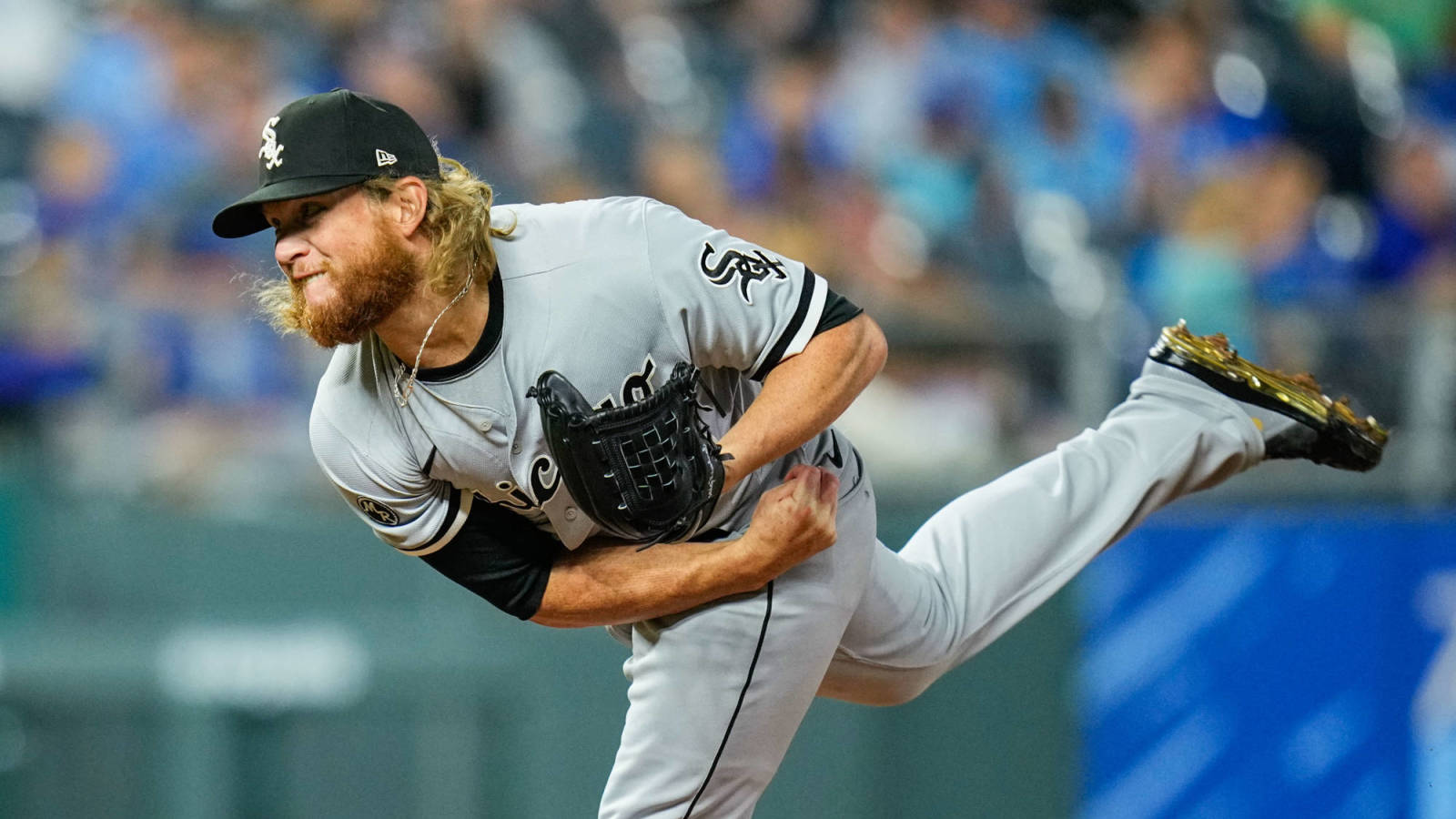
Craig Kimbrel, $16 million club option with $1 millon buyout (34): Kimbrel was unbelievable with the Cubs in 2021. Over 36 2/3 innings, his ERA was barely visible at 0.49, and his strikeout rate was 46.7%. After being dealt to the other Chicago club, his ERA was 5.09, and the strikeout rate dropped to 36.7%. Taken as a whole, it’s still 59 2/3 innings with an ERA of 2.26 and 42.6% strikeout rate. It was recently reported that the White Sox plan on picking up the option and are discussing Kimbrel in trades this offseason.
Joe Kelly, $12 million club option with $4 million buyout (34): Kelly had a great year in 2021, throwing 44 innings with a 2.86 ERA, 27.5% strikeout rate and 8.2% walk rate. However, he’s entering his age-34 season and has an inconsistent track record. The club might pass on this net $8 million decision and focus resources toward a rotation that could lose Max Scherzer and Clayton Kershaw and a lineup that could lose Corey Seager and Chris Taylor. Then again, the bullpen could be losing Kelly, Kenley Jansen, Jimmy Nelson and Corey Knebel.
Garrett Richards, $10 million club option with $1.5 million buyout (33): The Red Sox seem likely to buy Richards out. He struggled mightily as a starter through the season’s first half. A move to the bullpen initially brought much improved results, but Richards tailed off again toward the end of the year. Over 26 1/3 innings of relief, he posted a 3.42 ERA with roughly league average strikeout and walk numbers. Richards could draw interest as either a starter or bullpen arm this winter if Boston cuts him loose.
Mark Melancon, $7 million mutual option with $1 million buyout (37): Melancon’s one-year, $3 million deal with the Padres came with a mutual option for 2022, initially valued at $5 million. There was $2 million of incentives available based on games finished, maxing out at 45. Since he finished 53 games for the Friars this year, he has increased the value of that mutual option to the $7 million maximum. He saved 39 games for San Diego this year, pitching 64 2/3 innings with 2.23 ERA. The Padres would surely love to have their closer back at that price, but Melancon may be able to get multiple years in free agency. Still, it will be hard to turn down a salary more than double what he made this year. Mutual options rarely get exercised by both sides, but this is one of the odd ones that could make sense for all parties.
Craig Stammen, $4 million club option with $1 million buyout (38): Stammen was a workhorse for the Padres in 2021, throwing 88 1/3 innings, tied for his highest tally since 2010. He had an ERA of 3.06, near-average strikeout rate of 23.6% and excellent walk rate of 3.7%. For a net $3 million decision, it seems reasonable enough for San Diego to pick up that option, even though the Padres are running franchise-high payrolls lately.
Pierce Johnson, $3 million club option with $1 million buyout (31): After a strong 2019 season in Japan, Johnson signed a two-year, $5 million deal with the Padres, which has worked out well for both sides. Over the two seasons, Johnson threw 78 2/3 innings with a 3.09 ERA. The walk rate is a tad high at 11.1%, but the 32.1% strikeout rate is excellent. Considering that solid performance and modest price, this option seems likely to be picked up.
Josh Tomlin, $1.25 million club option with $250,000 buyout (37): Tomlin pitched 49 1/3 innings for Atlanta this year, but with a bloated 6.57 ERA. He did post a career-high BABIP, suggesting that there could be some bad luck in there. But with such a modest buyout and such poor surface numbers, it seems likely the club takes that route.
Dellin Betances, $1 million player option with no buyout (34): Once one of the most-feared relievers in baseball, Betances has been hampered by injuries in recent years. The 2018 season was the last time he logged more than 12 innings. The Mets took a gamble on him before the 2020 season, signing him to a one-year deal with player options for 2021 and 2022. Betances triggered his option for 2021 but then pitched only a single inning for the Mets this year before shoulder woes put him on the shelf and led to season-ending surgery in June. His player option had various escalators, all of which he missed because of the injuries, that could have increased its value to $3 million. Instead, it will be just $1 million, which he seems likely to exercise, considering his uncertain health outlook.
Keone Kela, $800,000 club option with no buyout (29): Kela signed a one-year, $1.2 million contract with the Padres last winter but logged only 10 2/3 innings before going on the shelf and requiring Tommy John surgery. His contract contained a clause that, in the event of such a circumstance, the Padres would get a club option for 2022. The surgery took place in May, meaning Kela will likely miss some of next season but could still return before the midway point. Considering Kela’s history of solid results and that the option is just barely above league average, it seems an easy call for the Padres to pick it up.
* Between 50 and 75 batters faced in relief
Previous installments in this series: catcher, first base, second base, third base, shortstop, center field, corner outfield, starting pitchers, left-handed relief.
More must-reads:
- Tommy La Stella has Achilles surgery; four-month recovery expected
- Mets outright Jose Peraza, three others
- The 'Old baseball stadiums' quiz
Breaking News
Customize Your Newsletter
 +
+
Get the latest news and rumors, customized to your favorite sports and teams. Emailed daily. Always free!

